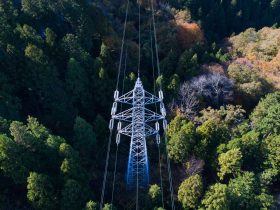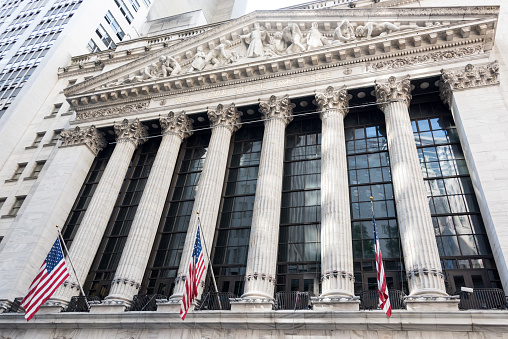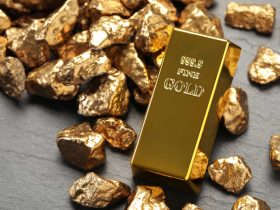Dear Investor,
As we round the corner and head into the fourth quarter of 2023, there are numerous economic factors flashing signs that could make the last quarter exciting and profitable for Old West clients. As you can see fromyour enclosed statement, our portfolios performed in line with or slightly better than our benchmarks in the third quarter. Our year-to-date performance is slightly lagging our benchmarks, but after three consecutive years of significant outperformance, I’m not dissatisfied with our results. There is a good chance we will have a tremendous fourth quarter as we are sitting in a number of stocks that are poised to do well.
With the exception of the S&P 500 (SP500, SPX) , our year-to-date performance is slightly lagging our benchmarks. The DOW, the equal weighted S&P 500, and small cap indexes are all near even for the year. The S&P 500 is a market weighted index, and due to the great run of what has been coined the Magnificent Seven (Apple, Alphabet, Meta, Microsoft, Tesla, Nvidia, Amazon) the index is up 13% year to date. Of course, these same stocks were largely responsible for the index being down 19% in 2022. The combined market caps of the Magnificent Seven is greater than the entire stock market values of France, China, the UK, and Japan combined. The S&P has not seen this type of concentration of value in over 60 years when the “Nifty Fifty” dominated the index. The Magnificent Seven constitute 34% of the index and have an average PE ratio of 50. Sixty years ago, the Nifty 50 included Xerox (XRX) with a PE of 50, Avon at 65 x, and Polaroid at 91 x. It remains to be seen which of the Magnificent Seven will become as irrelevant as Xerox, Avon and Polaroid in future decades, but at Old West we are quite comfortable owning none of the Magnificent Seven.
One of the big stories of this year has been the dramatic rise in interest rates. The ten-year Treasury recently crossed above 4.5%, and I found it interesting that the 200-year average is 4.5%. The U.S. Treasury will be issuing massive amounts of debt in the future. They need to finance the projected $2 trillion budget deficit in the current year, and very disturbingly, $7.6 Trillion of our $32 Trillion national debt will mature this year. I find it shocking that the U.S. Treasury didn’t issue mostly thirty-year debt three years ago when interest rates were at a 5,000-year low. Most Americans refinanced their home loans into 30-year loans at 3% or lower, but the PhDs at Treasury were issuing short term paper.
Rising interest rates are beginning to have repercussions throughout the economy. Credit card delinquencies are at the highest level since 2012, and this is before the resumption of student debt re-payments. Car loan delinquencies are at a multi-year high and home loan applications have plummeted with rates reaching 7.5%.
Rising interest rates have also resulted in a much higher dollar which has held back commodity prices. The strong dollar and decreasing liquidity (caused by Fed QT) are beginning to create havoc overseas. Most emerging economy countries have debt denominated in U.S. Dollars and many are on the verge of default. The Fed will soon be forced to once again revert to QE which will begin a sharp drop in the dollar, and we expect commodities including gold to move much higher.
In my letter written last quarter, I expressed concern over who will be the buyers of the massive amount of debt we will be issuing. Famed investor Ray Dalio recently predicted a brewing debt crisis in our country, as rates will have to keep moving higher to attract buyers. Economist at Goldman Sachs recently wrote “a sharp rise in long-term interest rates combined with widening deficits and heightened fiscal discord in Congress have renewed questions about the sustainability of rising government interest costs.” What they are alluding to is the possibility of a debt spiral, where our interest expenses keep rising and we need to borrow more money to cover the interest. Treasury’s current average interest rate on $33 Trillion of debt is 2.9%. That number will likely go much, much higher in the next five years. It’s just a matter of time until the Fed rides to the rescue.
As we’ve discussed in past investor letters, our portfolios currently have a large weighting to commodity-related companies. We believe the case for commodities is the most compelling we have ever seen as they are near 50-year lows relative to overall equity markets. We think the rush to clean energy and the billions of dollars being thrown at technologies that require these various metals will lead to much higher prices, and we believe the biggest movements will be concentrated in specific metals. Our current portfolio exposures are mainly in the producers and developers of uranium, copper, tin and silver. For our core weightings, we are focused on low-cost producers and developers trading at what we view to be attractive valuations. Companies that share both of these characteristics are difficult to find and we spend much of our time trying to uncover such unique opportunities.
Old West partner Brian Laks has led our efforts in this area. Brian writes the following:
Uranium was the first investment we made in this area, where a long industry downturn and skepticism about the future of nuclear power led to a destruction in supply that is now confronting a demand situation that is rapidly improving. Several years ago, we began building positions in many of the companies that would benefit from this trend, and recently have seen those investments perform strongly. We continue to maintain core positions in a handful of high-quality producers, developers and processing companies. As an added benefit, it was the research we did into that industry that originally opened our eyes to the much larger theme around energy transition materials that led us to a number of our other current investments.
Copper is often considered the prime example of an energy metal because of its growing use for electrification. Overall demand today, however, is still dominated by traditional end uses which makes it much more sensitive to changes in general economic activity than some of the other niche metals we follow. For this reason, we prefer to invest in situations where there are company-specific value creation levers rather than solely focusing on leverage to the commodity price. In this regard we remain intrigued by what the Lundin Group is doing in South America, having discovered what appears to be a new copper-gold-silver mining district and taking a methodical approach to consolidating the region. We wrote up Filo Corp (OTCQX:FLMMF) in our Q3 letter last year which interested readers can find on our website.
Tin is another area we find attractive. The tin price has been under pressure over the last year as long-term supply issues have been overshadowed by short-term demand weakness. Semiconductor sales have fallen this year along with sales of consumer electronics but are forecasted to rebound substantially in 2024. One of our investments in the sector, Alphamin Resources (OTCPK:AFMJF), is on track to open their second mine in a few months which is expected to increase production by 60%. With their low cost of production, the company is set to generate a significant amount of free cash flow, the majority of which they plan to pay out as a dividend. Even at the current price of tin, which we view as unsustainably low, it would likely represent a double-digit yield. We think the price of tin has to rise materially in the coming years to balance a projected supply shortfall and companies that can produce at low cost will greatly benefit.
While most of our mining investments are driven by the fundamentals of individual commodities, at times we will look at mines that produce multiple metals if we think the valuation is compelling. One such interesting case is Adriatic Metals.
Adriatic Metals is developing a polymetallic deposit in Europe that will produce two primary products: a zinc concentrate and a concentrate of lead and silver. In addition to those metals, it will generate revenue from contained copper, gold and antimony. The silver is of particular interest to us. Often thought of as the poor man’s gold, silver mainly sees interest from precious metals investors. Less discussed is the large and growing demand for silver from the industrial sector, especially in advanced technologies, where it is critical to a wide range of applications. The deposit’s unique characteristics lend it to being one of the lowest cost silver projects in the world.
The mine is located in Bosnia, and while the country may not be the first to come to mind when people think of mining, it actually has a long history of it going all the way back to the Bronze Age. The project is in an old mining town that had only recently been revisited with modern exploration techniques. Development will greatly benefit the surrounding community, revitalizing the area with new jobs and infrastructure. It is estimated that the project will add 2% to the entire country’s GDP. A friendly permitting environment has also contributed to an extremely fast development timeline, with the company going from discovery to production in only six years.
The company is led by founder Paul Cronin, a successful natural resource investor who took an interest in the project with an eye toward Europeans needing to rebuild domestic supplies of metals. Europe may seem like an unlikely place to develop a new mine, but the continent is making a push to become less dependent on foreign countries for access to raw materials. The EU has deeply committed to a green transition and achieving climate neutrality by 2050, and earlier this year released a critical raw materials act recognizing the importance of mining in achieving those goals.
The valuation of the company is among the lowest in our resource portfolio. At current commodity prices we estimate the mine can generate over $200 million in annual free cash flow versus a market cap of only $600 million. The combination of small footprint, high grade, and low capex lead to extraordinary economics with the company projecting an IRR above 100% for the project.
This investment shares similarities to others in our portfolio in that the fundamentals are strong, but investor awareness is lacking. As an example, the company released an update earlier this year that nearly doubled the estimated mineral resource and there was hardly any reaction from the market. With the company only weeks away from starting up the mine, we believe the onset of cash flow will finally get the attention of investors.
For more information on this or any of our other investments, please reach out to set up a call. We are always happy to discuss our ideas in more detail with current or prospective investors.
Thank you for your continued support, and we look forward to growing your money the balance of this year and beyond.
Sincerely,
Joseph Boskovich, Sr., Chairman and Chief Investment Officer
Original Post
Editor’s Note: The summary bullets for this article were chosen by Seeking Alpha editors.
Editor’s Note: This article discusses one or more securities that do not trade on a major U.S. exchange. Please be aware of the risks associated with these stocks.
Read the full article here












Leave a Reply